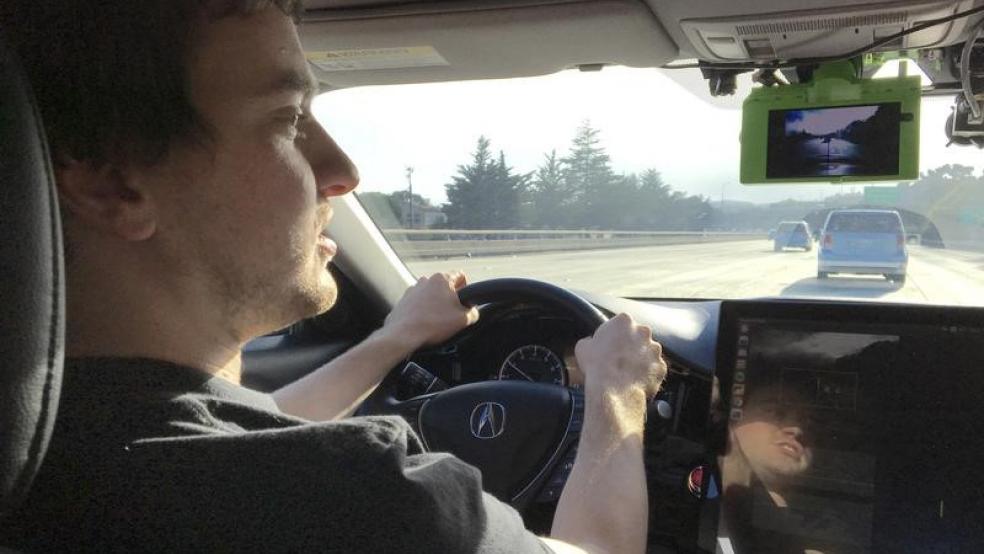The list of government-mandated safety features on cars, covering everything from airbags to backup cameras, is about to get a little longer. The U.S. Department of Transportation this week proposed a new rule that would require all new cars have vehicle-to-vehicle communication technology, allowing them to “talk” to each other in order to avoid crashes.
Cars with vehicle-to-vehicle (V2V) technology can transmit data on location, direction and speed to other vehicles, helping the cars identify risks and warn drivers of imminent crashes. V2V communication could be integrated into existing safety features like automatic emergency brakes and adaptive cruise control, to further avoid or lessen the impact of crashes.
Related: The 15 Best Cars of 2017
It might also help drivers make better choices when there might be a threat they can’t detect, such as deciding whether to pass on a two-lane road or make a left turn across the path of oncoming traffic.
“Advanced vehicle technologies may well prove to be the silver bullet in saving lives on our roadways,” National Highway Traffic Safety Administrator Mark Rosekind said in a statement. “V2V and automated vehicle technologies each hold great potential to make our roads safer, and when combined, their potential is untold.”
The NHTSA claims that the V2V transmissions, which could go out up to 10 times per second, would include safety protections, and would not involve information that could be linked to individuals.
If approved, manufacturers would need to begin phasing in the new technology in 2021, with all new cars equipped with V2V technology by 2023.





